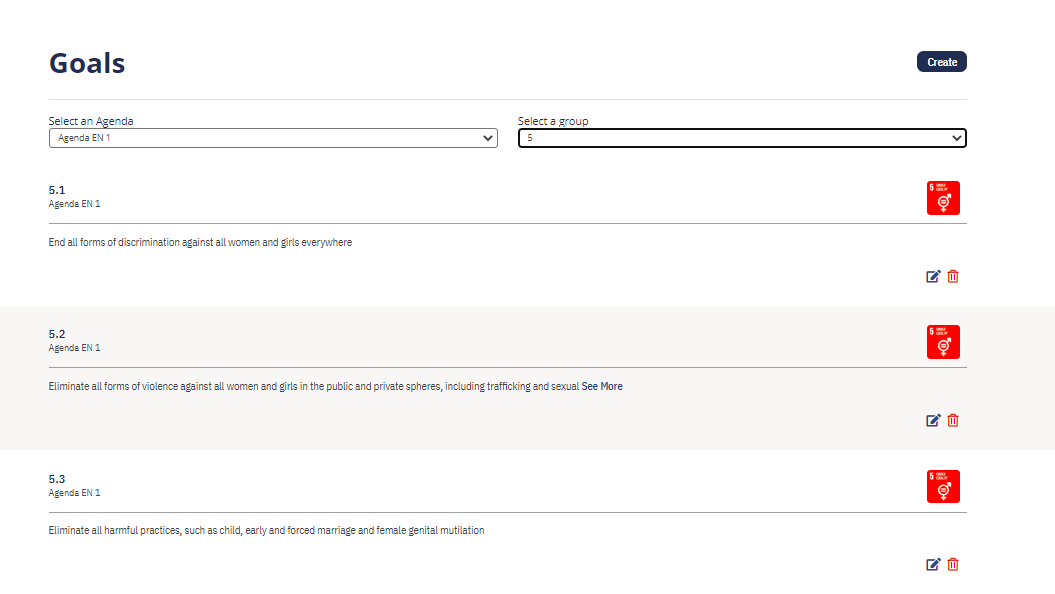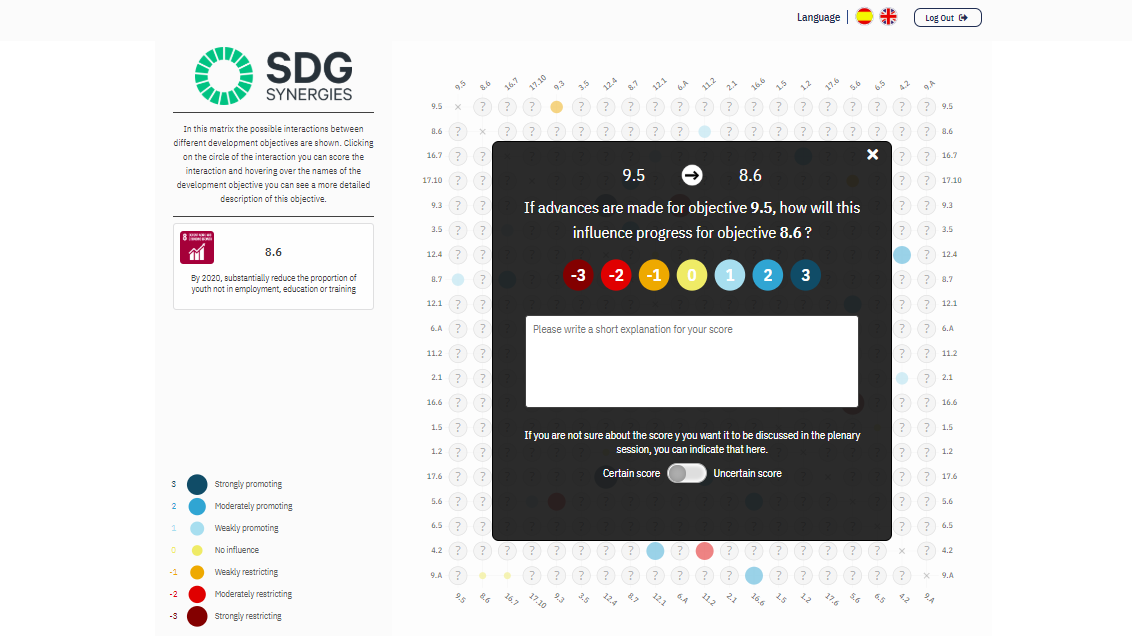SDG Synergies
Making effective policy often means balancing sets of highly connected but very diverse targets. Striking the right balance can unlock synergies that bring multiple targets closer. The wrong one can see momentum lost, and progress on one target pushing others out of reach.
SDG Synergies is a practical tool for understanding how groups of policy areas and targets interact, using systems thinking. Designed by researchers at Stockholm Environment Institute originally to support governments in implementing the Sustainable Development Goals, SDG Synergies could be invaluable within and beyond the field of sustainability.
SDG Synergies is now being developed as a free online tool.
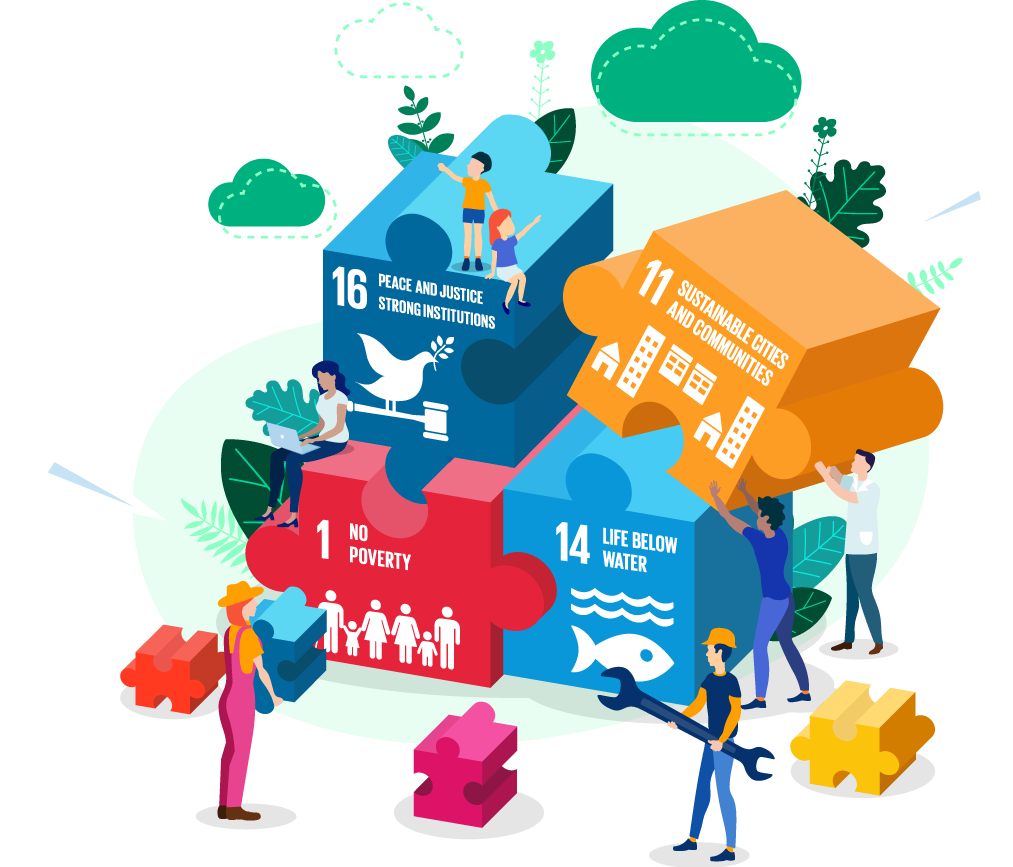
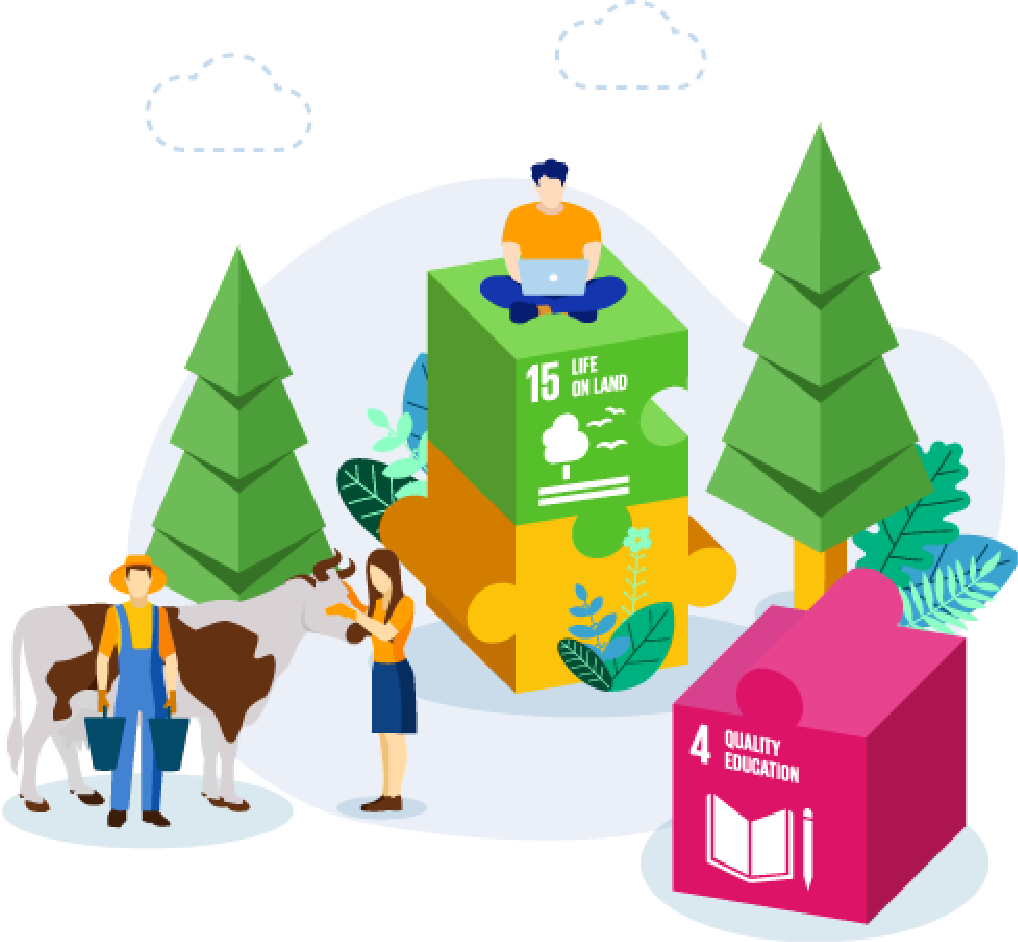
What is SDG Synergies?
SDG Synergies helps you record, visualize and analyse how multiple targets are likely to interact in a given context. In doing so, it reveals deep patterns and relationships that would not be seen by simply looking at interactions between pairs of targets.
Based on a participatory, discussion-based scoring process, SDG Synergies develops a cross-impact matrix of interactions between all the targets being considered: how progress on one might affect progress on the other, and vice versa. With intuitive controls it is then possible to regroup and rank these interactions to explore different aspects of the system.
Using advanced network analysis and visualization capabilities, SDG Synergies can surface more complex relationships, such as how the effects of one interaction could ripple through the larger system.
The visualizations and analyses can, for example, inform decisions about how to prioritize or sequence implementation of different targets, or how best to manage potential trade-offs between them. They can also help to identify what cross-sectoral collaborations would be most productive.
Who is SDG Synergies for?
SDG Synergies is invaluable for anyone who needs to make strategic decisions that involve multiple interacting targets and interests. To date it has been used by national and regional governments around the world, universities and more. But it could equally add value in the private and non-profit sectors. In 2016 SEI worked with the Swedish steel industry, applying a process building on the same basic methodology as SDG Synergies, to explore how the industry can maximize the value it brings to a more sustainable society over the coming decades.
The SDG Synergies tool will soon be available free to use at this website. Sign up below if you want to be notified when it comes online, and about webinars on the tool.
SEI is also interested in hearing from potential beta partners to help us develop the tool further through real-life applications.
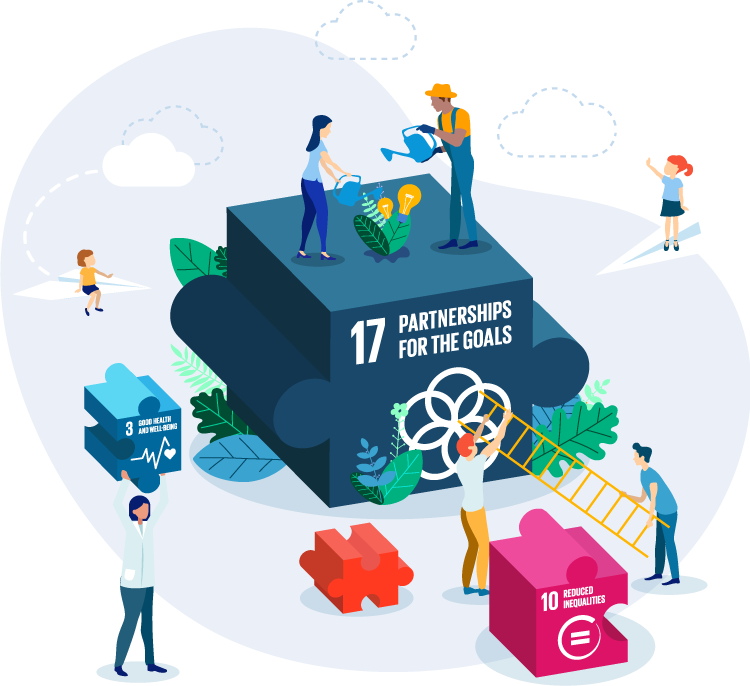
Using SDG Synergies
Every application of SDG Synergies is different, tailored to the context, the targets, and the resources available. But typical SDG Synergies processes feature three stages:
• Design
• Interaction scoring
• Analysis
Experiences
Read about how SDG Synergies has already been used around the world.
Learn more
Read a selection of articles, reports and more about the scientific basis behind SDG Synergies and how it has been used to date.
Or, download the manual to get started.
-
Deepening our understanding of which policy advice to expect from prioritizing SDG targets
This paper demonstrates how to adopt the multi-criteria analysis technique Analytic Network Process (ANP) for prioritizing SDG targets. Please note that this technique is not yet implemented in the SDG Synergies tool.
-
Deciphering the scientific literature on SDG interactions: A review and reading guide
Science of the Total Environment, 728 (2020) 138405
This paper provides a review of the scientific literature on SDG interaction sciences.
-
Governing trade-offs and building coherence in policy-making for the 2030 Agenda (2019)
Politics and Governance, 7(4). 254–263.
Introduces a comprehensive framework for identifying, assessing and governing trade-offs and enhancing coherence in public policy decision-making. Includes a discussion of the role of cross-impact analysis such as that used in SDG Synergies.
-
Towards systemic and contextual priority setting for implementing the 2030 Agenda (2017)
Sustainability Science, 13. 531–548
Presents the methodological foundation behind the SDG Synergies approach, including the network analysis features.
-
Policy: Map the interactions between Sustainable Development Goals (2016)
Nature, 534. 320–322
This Nature Comment outlines the first seven-point scale used to score SDG interactions in the SDG Synergies approach.
-
Understanding the interactions of Sustainable Development Goals in Sri Lanka
This SEI brief summarizes key findings from a government-led, systemic review for Sri Lanka on the 2030 Agenda for Sustainable Developmen
-
Interactions among the Sustainable Development Goals in Sri Lanka: a systemic assessment
This report presents findings of a national-level, government-led analysis of interactions among targets that are part of the Sustainable Development Goals (SDGs) for Sri Lanka.
-
SDG Synergies: An approach for coherent 2030 Agenda implementation (2019)
An SEI brief that offers a quick introduction to the SDG Synergies approach, including its three steps.
-
Piloting the SDG Synergies approach in Mongolia (2019)
A project report describing the experiences and lessons learned from the application of SDG Synergies in Mongolia.
-
SDGs and the environment in the EU: A systems view to improve coherence (2019)
This report presents findings from a proof-of-concept study applying the SDG Synergies approach to explore how environmental targets interact with other Sustainable Development Goals at the EU level.
-
Taking SDG Synergies regional: Q&A with Nina Weitz about an EU-level interactions study (2019)
Q&A with Nina Weitz who led a study commissioned by the European Environment Agency (EEA), looking at how environmental targets interact with the rest of the 2030 Agenda in the EU.
-
You need to understand SDG interactions – here’s why (2017)
Måns Nilsson shares insights from SEI’s collaboration with the International Council for Science (ICSU) on SDG interactions.
-
A new tool helps stakeholders quickly visualize SDG interactions in Colombia (2019)
This feature outlines experiences from a workshop in Colombia where a first version of the SDG Synergies tool was used to score interactions between SDG targets.
-
Mongolia finds many ways to use the SDG Synergies approach (2019)
Describes how SDG Synergies was integrated into a range of policy processes in the two years following the capacity-building workshop in Mongolia.
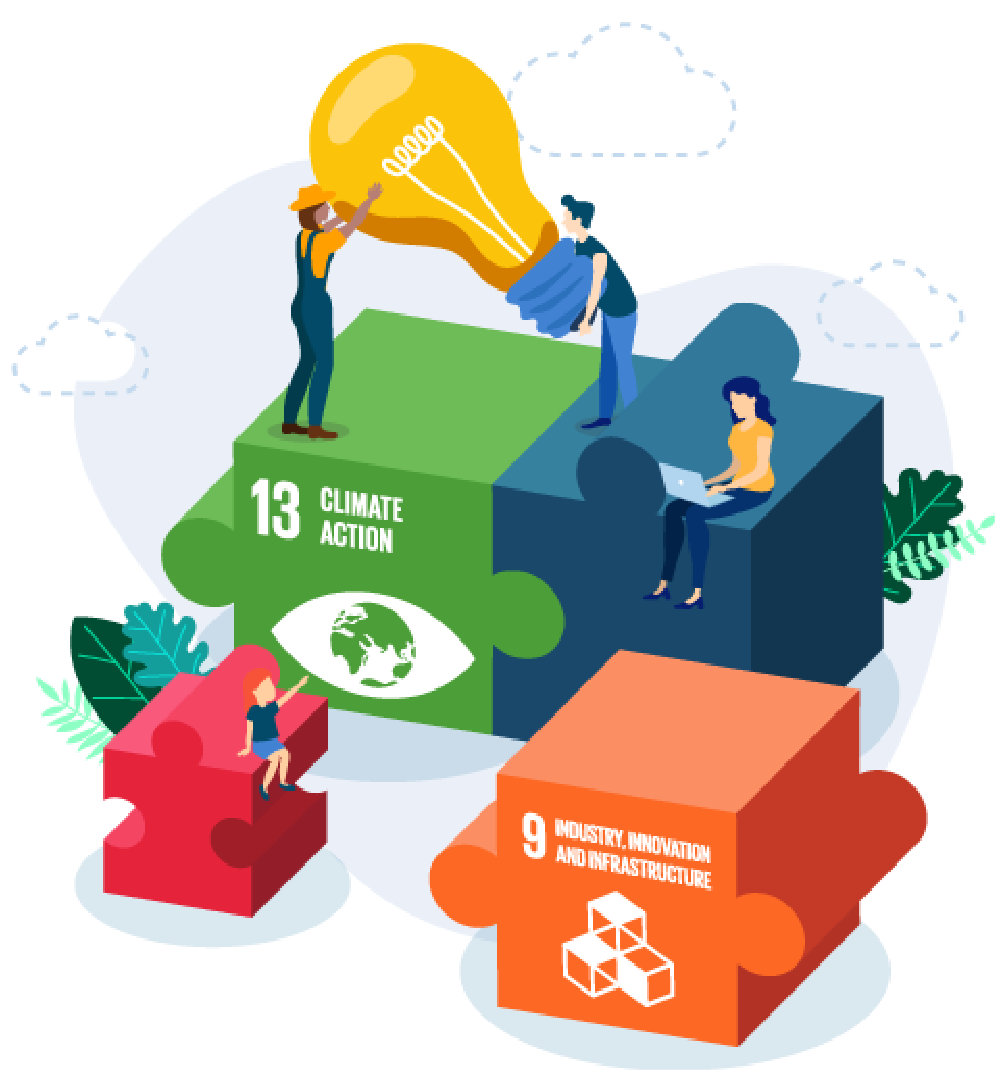
Development of SDG Synergies
The SDG Synergies tool, and the broader SDG Synergies approach, have been developed by Stockholm Environment Institute.
They have their scientific basis primarily in articles by Nilsson et al. (2016) and Weitz et al. (2017). But a series of real-world case studies in collaboration with committed partner organizations have been invaluable in their development, and in translating theory into practice. We will continue to incorporate improvements, methodological innovations and additional analytical perspectives to meet demand from partners and fill research gaps.
The SDG Synergies team gratefully acknowledges the financial and technical contributions of UNDP Asia and the Pacific, UN Environment, Puntoaparte and Showntelldata in the development of the tool.

Sign up
SDG Synergies tool is now available online in this link. Sign up to learn about upcoming webinars presenting the tool and its capabilities.


